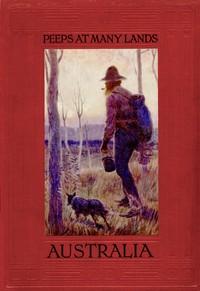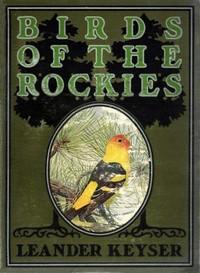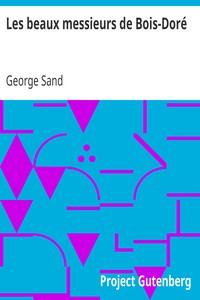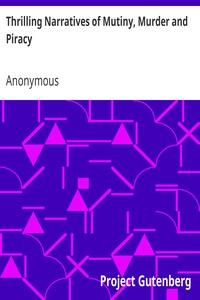|
|
Read this ebook for free! No credit card needed, absolutely nothing to pay.Words: 10928 in 4 pages
This is an ebook sharing website. You can read the uploaded ebooks for free here. No credit cards needed, nothing to pay. If you want to own a digital copy of the ebook, or want to read offline with your favorite ebook-reader, then you can choose to buy and download the ebook.

: Peeps At Many Lands: Australia by Fox Frank Spence Percy F S Percy Frederick Seaton Illustrator - Australia Description and travel; Australia History@FreeBooksWed 07 Jun, 2023 ite near. One can never catch many crows in the same district with the same device; they seem to learn to avoid what is dangerous. Very rarely can they be poisoned, no matter how carefully the bait is prepared. Bushmen tell all sorts of stories of the cunning of the crow. One is that of a man who suffered severely from a crow's depredations on his chickens. He prepared a poisoned bait and noticed the bird take it, but not devour it; that crow carefully took the poisoned tit-bit and put it in front of the man's favourite dog, which ate it, and was with difficulty saved from death! Another story is that of a man who thought to get within reach of a crow by taking out a gun, lying down under a tree, and pretending to be dead. True enough, the crow came up and hopped around, as if waiting for the man to move, and so to see if he were really dead. After awhile, the crow, to make quite sure, perched on a branch above the man's head and dropped a piece of twig on to his face! It was at this stage that the man decided to be alive, and, taking up his gun, shot the crow. There may be some exaggeration in the bushmen's tales of the crow's cunning, but there is quite enough of ascertained fact to show that the bird is as devilish in its ingenuity as in its cruelty. In most parts of Australia there is a reward paid for every dead crow brought into the police offices. Still, in spite of constant warfare, the bird holds its own, and very rarely indeed is its nest discovered--a signal proof of its precautions against the enmity of man. To turn to a more pleasant type of feathered animal. On the whole, the most distinctly Australian bird is the kookaburra, or "laughing jackass." The kookaburra is about the size of an owl, of a mottled grey colour. Its sly, mocking eye prepares you for its note, which is like a laugh, partly sardonic, partly rollicking. The kookaburra seems to find much grim fun in this world, and is always disturbing the Bush quiet with its curious "laughter." So near in sound to a harsh human laugh is the kookaburra's call that there is no difficulty in persuading new chums that the bird is deliberately mocking them. The kookaburra has the reputation of killing snakes; it certainly is destructive to small vermin, so its life is held sacred in the Bush. And very well our kookaburra knows the fact. As he sits on a fence and watches you go past with a gun, he will now and again break out into his discordant "laugh" right in your face. The Australian magpie, a black-and-white bird of the crow family, is also "protected," as it feeds mainly on grubs and insects, which are nuisances to the farmer. The magpie has a very clear, well-sustained note, and to hear a group of them singing together in the early morning suggests a fine choir of boys' voices. They will tell you in Australia that the young magpie is taught by its parents to "sing in tune" in these bird choirs, and is knocked off the fence at choir practice if it makes a mistake. You may believe this if you wish to. I don't. But it certainly is a fact that a group of magpies will sing together very sweetly and harmoniously. One could not exhaust the list of Australian birds in even a big book. But a few more call for mention. There is the emu, like an ostrich, but with coarse wiry hair. The emu does damage on the sheep-runs by breaking down the wire fences. On account of its mischievous habit of breaking fences the emu is hunted down, and is now fast dwindling. In Tasmania it is altogether extinct. Another danger to its existence is that it lays a very handsome egg of a dark green colour. These eggs are sought out for ornaments, and the emu's nest, built in the grass of the plain , is robbed wherever found. The brush turkey of Australia is strange in that it does not take its family duties at all seriously. The bird does not hatch out its eggs by sitting on them, but builds a mound of decaying vegetation over the eggs, and leaves them to come out with the sun's heat. The brolga, or native companion, is a handsome Australian bird of the crane family. It is of a pretty grey colour, with red bill and red legs. The brolga has a taste for dancing; flocks of this bird may be seen solemnly going through quadrilles and lancers--of their own invention--on the plains. Another strange Australian bird is called the bower-bird, because when a bower-bird wishes to go courting he builds in the Bush a little pavilion, and adorns it with all the gay, bright objects he can--bits of rag or metal, feathers from other birds, coloured stones and flowers. In this he sets himself to dancing until some lady bower-bird is attracted, and they set up housekeeping together. The bower-bird is credited with being responsible for the discovery of a couple of goldfields, the birds having picked up nuggets for their bowers, these, discovered by prospectors, telling that gold was near. If the bower-bird wishes for wedding chimes to grace his picturesque mating, another bird will be able to gratify the wish--the bell-bird which haunts quiet, cool glens, and has a note like a bell, and yet more like the note of one of those strange hallowed gongs you hear from the groves of Eastern temples. Often riding through the wild Australian Bush you hear the chimes of distant bells, hear and wonder until you learn that the bell-bird makes the clear, sweet music. One more note about Australian nature life. In the summer the woods are full of locusts , which jar the air with their harsh note. The locust season is always a busy one for the doctors. The Australian small boy loves to get a locust to carry in his pocket, and he has learned, by a little squeezing, to induce the unhappy insect to "strike up," to the amusing interruption of school or home hours. Now, to get a locust it is necessary to climb a tree, and Australian trees are hard to climb and easy to fall out of. So there are many broken limbs during the locust season. They represent a quite proper penalty for a cruel and unpleasant habit. THE AUSTRALIAN BUSH Free books android app tbrJar TBR JAR Read Free books online gutenberg More posts by @FreeBooks

: Birds of the Rockies by Keyser Leander S Leander Sylvester - Birds; Birds Colorado Natural History; Animals-Wild-Birds@FreeBooksWed 07 Jun, 2023

: Les beaux messieurs de Bois-Doré by Sand George - France History Louis XIII 1610-1643 Fiction FR Littérature@FreeBooksWed 07 Jun, 2023
|
Terms of Use Stock Market News! © gutenberg.org.in2025 All Rights reserved.






